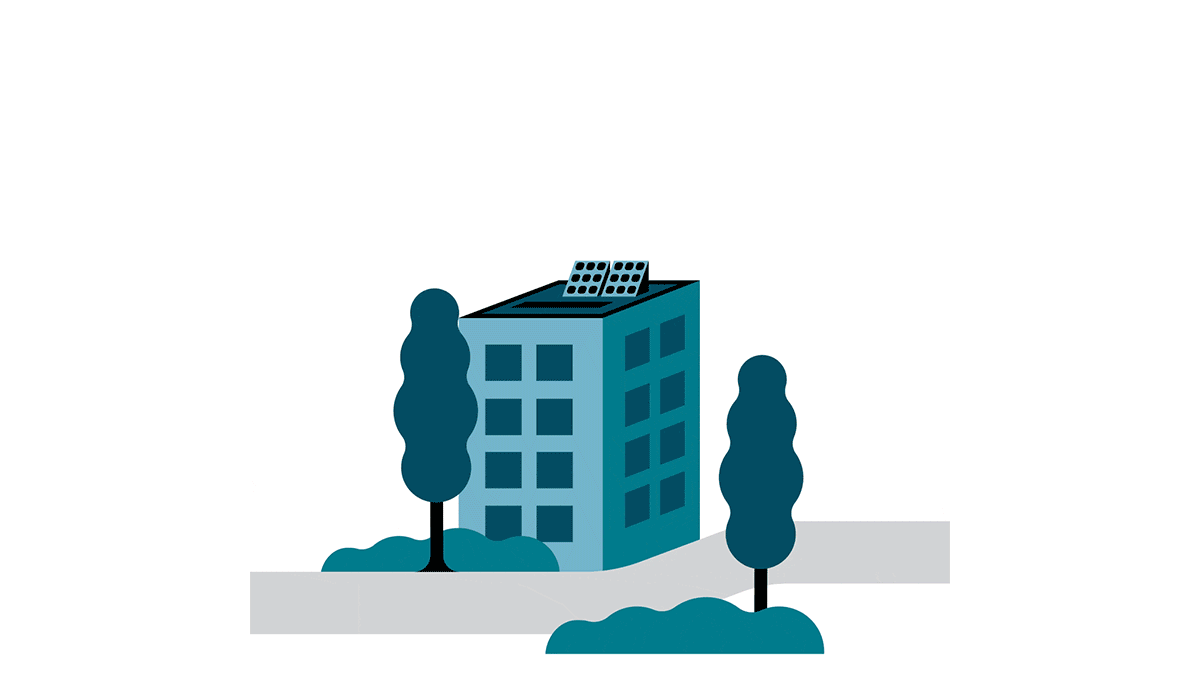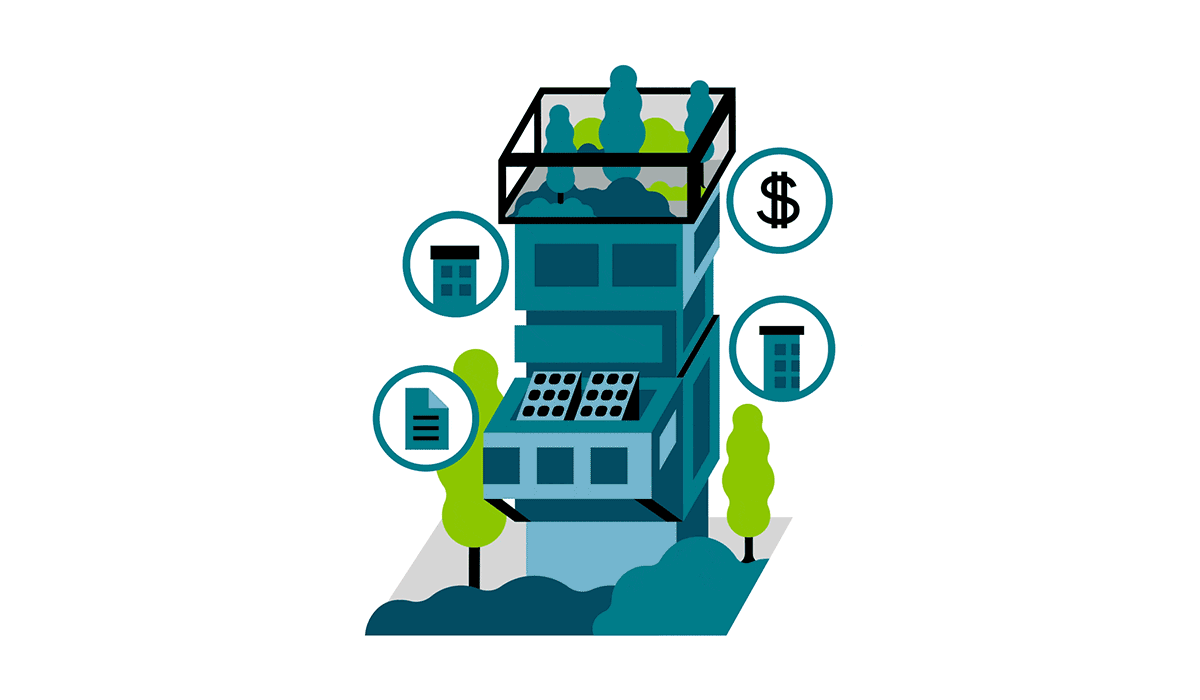
High-performance buildings are often disregarded by civic leaders and property owners because of a misguided stereotype: They’re too expensive.
The truth is that buildings that reduce negative environmental impact save money while enhancing tenant satisfaction. According to a study by the U.S. General Services Administration—the largest operator of office space in the country—high-performance buildings deliver substantial savings compared with legacy buildings. They result in 23% less energy and 28% less water used, a 23% decrease in building operating expenses, 9% less waste sent to landfills, and a 2% increase in tenant gratification.
“High-performance buildings save energy, save water, cost less to operate, produce less waste, and have more satisfied occupants compared with typical buildings,” the study states. “In short, they deliver cost savings and tenant satisfaction.”
In addition to saving money, high-performance buildings make a lot of sense for long-term city planning as the regulatory environment shifts toward wider acceptance of—and demand for—sustainable design. The 2021 building energy codes, for instance, often ask for high-performance design, and cities like New York and San Jose, California, are already requiring structures to be powered by renewable energy, aligning with growing adoption of the Zero Code.
Here’s how civic leaders can take advantage of incentives by partnering with an architect to develop affordable, high-performance, climate-positive projects.

High-performance design can improve health, efficiency, & savings
Buildings designed with high-performance elements reduce negative impacts to the environment—and demand for these structures is growing.
Since 2012, nonresidential net-zero buildings have increased by more than 700 percent, in the process boosting health benefits through improved air quality (both outdoor, with reduced CO2 emissions, and indoor, when ventilated to reduce airborne pollutants, condensation, mold, and other hazards). They also provide ongoing economic benefits. High-performance buildings with sustainability certifications like Energy Star, for instance, can sell for 16% more than conventional buildings, and LEED-certified buildings have an occupancy rate 4% higher than noncertified buildings. Architects can help civic leaders reduce up-front costs with an integrated design process, and also help increase a building’s long-term value, due to the public’s desire for sustainability certifications.
Communities are currently working with architects to design high-performance buildings that are resilient and adaptable, in order to remain relevant in an uncertain future—ones that are uniquely suited to the areas where they’re constructed. The Louisiana Children’s Museum in New Orleans, for instance—a 2022 COTE Top Ten award winner—uses radiant floor cooling to mitigate the region’s humidity, while operational costs are kept low via a building envelope, passive shading measures, and native plants. The result boosts efficiency and lowers costs.
Resilient structures solve multiple challenges
High-performance design is also good at addressing various concerns at once.
Take affordable housing. By reusing existing buildings, civic leaders can help relieve the housing crisis, avoid displacement, and strengthen failing infrastructure. “Existing buildings are a tremendous untapped resource in climate action,” stated Lori Ferriss, AIA, the director of sustainability and climate action at Goody Clancy. “Reusing an existing building offers substantial carbon savings in the critical near term, which is the time frame that matters as we look to stay within the Paris Agreement’s critical carbon budget.”
And by retrofitting buildings to withstand natural disasters, communities can realize a direct economic benefit, including lower insurance premiums and less damage from adverse weather events. In addition, the indirect benefits are seemingly endless; pedestrian and bike paths around wetlands, for instance, improve community health and accessibility and strengthen ecosystems.
Renovating and retrofitting existing structures to become more efficient is a great way to reduce embodied CO2 emissions and invest in the communities of the future. For instance, Market One, a 2021 COTE Top Ten winner, was a manufacturing facility in Des Moines, Iowa. The site was transformed, using sustainable strategies, into an open work environment—the first major reinvestment in the city’s market district, one that set the standard for responsible development in the area. “The developers saw an opportunity to tell an important story of the role historic buildings can play in reuse of existing building fabric,” said Channing Swanson, AIA, of the Neumann Monson architecture firm.
An opportunity to take advantage of incentives
As high-performance buildings become more widespread, there’s greater demand for them, both in communities and by state and federal governments. Increasingly, there are government and industry incentives offered through private programs and large spending bills, like the recently passed Inflation Reduction Act, which included $5 billion to incentivize the use of low-carbon materials in public infrastructure projects and government-owned buildings. Public officials can take advantage of these incentives by partnering with an architect to develop affordable, climate-positive projects. They can also take the initiative by pushing for energy-efficiency legislation and requiring buildings (at least government-owned ones) to exceed code.
“The construction industry is a $1.9 trillion piece of the United States economy, and architects are its thoughts leaders,” stated Mike Davis, FAIA, principal at Bergmeyer and chair of AIA’s Government Advocacy Committee. “We know what’s possible, make connections happen, and can tell elected officials about the relationship between buildings and climate change. We can talk with them about how design thinking and planning can make our communities more equitable and resilient.”
___
Want to learn how high-performance design can benefit your project? Partner with an architect. They’ll work with you to develop affordable, high-performance, climate-positive design solutions. Need talking points? AIA’s ROI of High-Performance Design breaks down the value across eight key areas. Renovate, Retrofit, and Reuse: Uncovering the hidden value in America’s existing building stock contextualizes the tremendous opportunity in existing buildings, using economic data, expert insights, and compelling case studies.